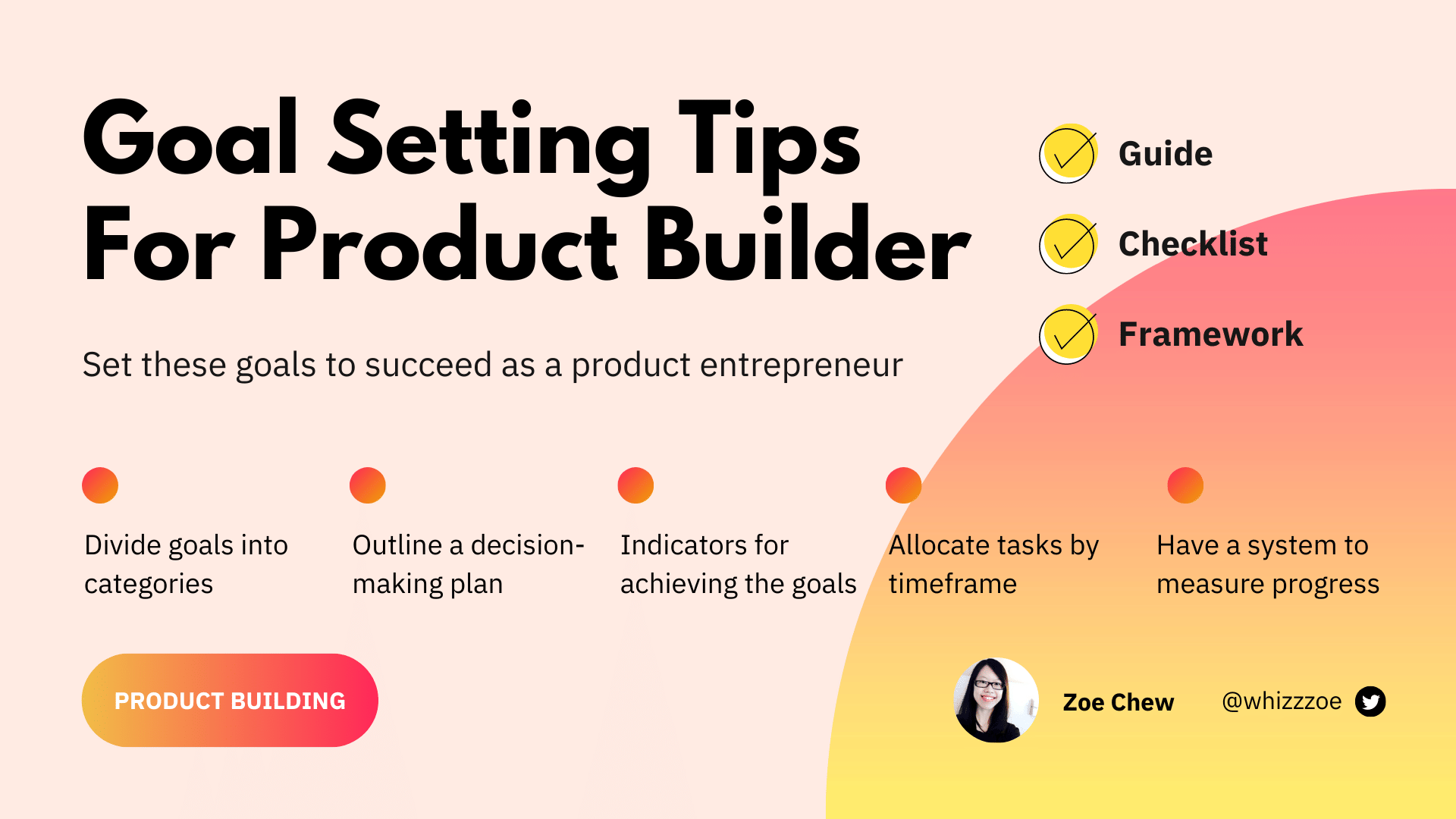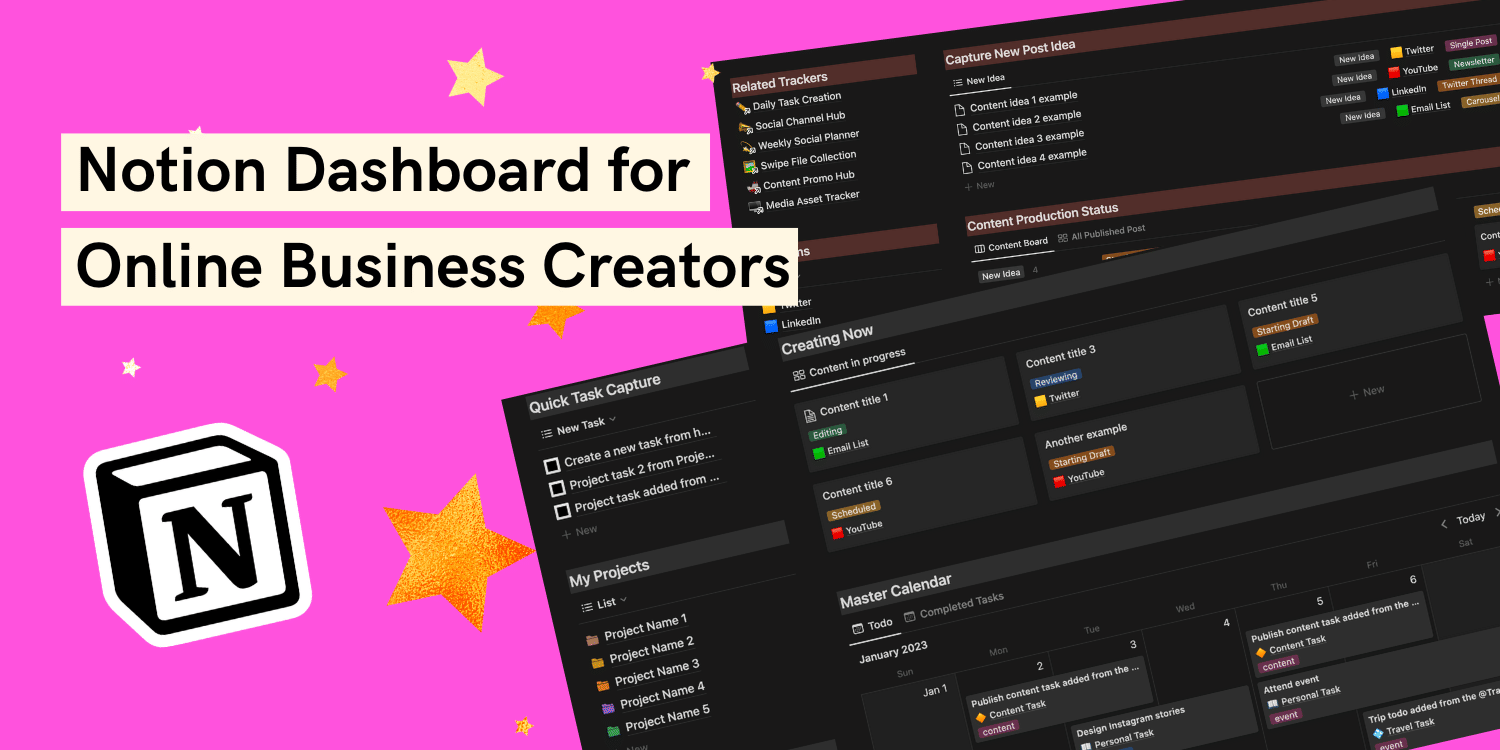Note: This article is part of my toolkit newsletters🚀 where I share resources about building things. Join me :)
As a product builder, I build things full-time, whether it’s a venture newsletter, micro-products or coaching founders to build tech products using my rapid MVP technique. For fun, I build AI article tool, event app, meal box app, SaaS tracker, sneaker app, and more.
In my previous post, I shared my best frameworks for quickly validating ideas. 💡
Today, I’m writing this guide to help product founders, makers, and developers in setting effective goals that will increase revenue, validate new ideas, or improve the user experience of your product.
It's not too late for new year, new goals vibes 😸 Let’s get started!
Step 1: Divide your goals into categories
Whether you’re a product founder, solopreneur or bootstrap entrepreneur, you're likely to include these business goals in your goal-setting strategy, including but not limited to these Goal Areas:
Revenue: Financial target for your product or business.
Product: Development of new features or new product.
Tech & Engineering: Technical aspects of your product.
Design: Enhancement to your product's user experience.
Marketing: Brand awareness and audience building.
By breaking down your business goal into specific categories (Goal Areas), you can identify the resources, strategies and tactics needed to reach the goal.
The larger your company, the more Goal Areas you may need to include, such as Sales, Customer Support, Partnerships, and so on.
Step 2: Write a brief strategic plan
Create an outline of decision-making or action plan for how you intend to achieve your goal.
These are examples of outline for each goal area; however, for greater clarity, you can expand the description below into a strategic plan.
Revenue:
Increase revenue through launching niche-focused products.
Product:
Build a portfolio of products through the venture studio model.
Tech & Engineering:
Increase efficiency by utilizing low-code development.
Design:
Double down on user research interviews.
Marketing:
Provide valuable content to help my potential customers.
Step 3: Use the OKR method
Objective Key Results (OKRs) are a way to break down larger objectives into tangible and actionable goals.
In other words, think of creating goals and sub-goals.
There are 2 components in OKR:
Objective: a statement of goal for each business goal category (where are we heading?)
Key Results: a set of key results that measure the progress towards the objective (what are the indicators for having achieved my objective?)
Here are some examples:
Revenue 💰
Objective: Increase quarterly MRR (monthly recurring revenue) by 15%
Key Result 1: Create a solid lifecycle email marketing campaign
Key Result 2: Make $35,000 in 30 days after new product launch
Product 🚀
Objective: Diversify product portfolios
Key Result 1: Validate three product ideas
Key Result 2: Conduct 20 user interviews for a new idea
Tech 🤓
Objective: Improve the overall efficiency of engineering tasks
Key Result 1: Automate repetitive tasks using low-code tools
Key Result 2: Hire 3 developers to help with product development
Marketing 📣
Objective: Expand potential customer base through owned channels
Key Result 1: Increase site traffic by 120% this year through SEO
Key Result 2: Increase the number of email subscribers to 35,000.
Pro Tip:
Depending on the size of your project or business, you can have more than one Objective in each business goal category, or more than one Key Result in each objective.
Step 4: Set timeframes
You can accomplish everything, but not all at once—except Evelyn Wang in Everything Everywhere All at Once.
In this step, you can assign each Objective to a specific timeframe or various sets of Key Results to be carried out in a specific timeframe.
Then, create specific tasks that are needed to help you achieve the Key Results.
Example Q1:
Goal area: Product
Key result: Validate three product ideas
Tasks: List out business hypotheses to test, customer research, prepare user interview documents

Step 5: Track
You can track your goals using Excel, Google Sheets, or any other software you prefer, including: when to execute, what the target is, what the status is, and so on.
To keep things more accessible, I like to use this systemized Notion templates to support the entire goal-setting, tracking and reviewing process in one place:


👉 Check out the Notion templates pack ::
🚩 Mistakes I made (and why you should avoid):
Less is more.
Adding more goals may not necessarily lead to greater progress or success for your product. In fact, having too many goals can create complexities that impede progress. Do one thing exceptionally well.
Set elimination goals. "Deciding what not to do is as important as deciding what to do," said Steve Jobs. When you start saying ‘no’, you start saying ‘yes’ to goals that will drive your business forward.
Leave room for new opportunities and growth. For example, you may focus exclusively on maximizing profits for your products, without considering other important areas such as customer service, user experience and marketing.
Leading vs. lagging. Focus on the process, not the end target. By focusing on the actions that will lead to success (e.g. write better copywriting, improve the product), you will inevitably achieve your ultimate objective (e.g. increasing MRR).
[1] Get my product-building teardown — Join my newsletter 🚀







